List of nail diseases. Nail Diseases: Comprehensive Guide to Diagnosis and Treatment of Common Nail Disorders
How to identify and manage brittle nail syndrome. What are the most effective treatments for onychomycosis. How to differentiate between various nail disorders. What role does biotin supplementation play in nail health. How to assess and improve nail flexibility. What are the latest advancements in nail disorder management.
Understanding Brittle Nail Syndrome: Causes, Symptoms, and Treatment Options
Brittle nail syndrome is a common nail disorder characterized by fragile, easily breakable nails. This condition can significantly impact a person’s quality of life and self-esteem. What causes brittle nails? The etiology is multifactorial, including both internal and external factors.
Internal factors may include:
- Nutritional deficiencies
- Hormonal imbalances
- Certain medical conditions
External factors often involve:
- Frequent exposure to water
- Use of harsh chemicals
- Mechanical trauma
How can brittle nail syndrome be diagnosed? Dermatologists often use a pathogenesis-based approach, considering both clinical presentation and potential underlying causes. A proposed grading system helps in assessing the severity of the condition, allowing for more targeted treatment strategies.

Treatment Strategies for Brittle Nails
What are the most effective treatments for brittle nails? Treatment options typically include:
- Topical treatments (e.g., nail hardeners, moisturizers)
- Oral supplements (e.g., biotin, though its efficacy is debated)
- Lifestyle modifications (e.g., reducing water exposure, wearing gloves)
- Addressing underlying medical conditions
Is biotin supplementation truly beneficial for nail health? Recent studies have cast doubt on the widespread use of biotin for nail disorders. While some patients may benefit, it’s not a one-size-fits-all solution. Dermatologists now recommend a more cautious approach to biotin supplementation, focusing on targeted use for specific cases rather than general recommendation.
Onychomycosis: A Comprehensive Overview of Fungal Nail Infections
Onychomycosis, or fungal nail infection, is one of the most prevalent nail disorders worldwide. How common is onychomycosis? Studies suggest it affects up to 14% of the general population, with higher rates among older adults and individuals with certain risk factors.

What are the main types of onychomycosis? The condition is typically classified into several subtypes:
- Distal lateral subungual onychomycosis (DLSO)
- Proximal subungual onychomycosis (PSO)
- White superficial onychomycosis (WSO)
- Candidal onychomycosis
- Total dystrophic onychomycosis (TDO)
How does onychomycosis impact quality of life? Recent systematic reviews have highlighted the significant negative effects of onychomycosis on patients’ quality of life, including physical discomfort, emotional distress, and social embarrassment. This underscores the importance of effective diagnosis and treatment.
Diagnosis and Treatment of Onychomycosis
What are the most reliable methods for diagnosing onychomycosis? While clinical presentation can be suggestive, confirmatory testing is crucial for accurate diagnosis. Common diagnostic methods include:
- Direct microscopy (KOH preparation)
- Fungal culture
- Histopathological examination
- Polymerase chain reaction (PCR) testing
How should onychomycosis be treated? Treatment options have expanded in recent years, offering more effective and patient-friendly solutions. Current treatment modalities include:
- Topical antifungal agents (e.g., efinaconazole, tavaborole)
- Oral antifungal medications (e.g., terbinafine, itraconazole)
- Combination therapy (topical + oral)
- Laser therapy
- Photodynamic therapy

The choice of treatment depends on various factors, including the type and severity of infection, patient preferences, and potential drug interactions. A personalized approach often yields the best results.
Nail Psoriasis: Recognizing and Managing a Common Dermatological Condition
Nail psoriasis is a frequent manifestation of psoriatic disease, affecting up to 90% of patients with psoriasis at some point in their lives. How does nail psoriasis present clinically? Common features include:
- Pitting of the nail plate
- Oil drop or salmon patch discoloration
- Onycholysis (separation of the nail from the nail bed)
- Subungual hyperkeratosis
- Splinter hemorrhages
Why is early diagnosis and treatment of nail psoriasis important? Nail involvement in psoriasis is often associated with more severe cutaneous disease and a higher risk of psoriatic arthritis. Moreover, it can significantly impact a patient’s quality of life and functional capacity.
Treatment Approaches for Nail Psoriasis
What are the most effective treatments for nail psoriasis? Treatment options have expanded in recent years, offering more targeted and efficacious solutions. Current treatment modalities include:
- Topical therapies (e.g., corticosteroids, vitamin D analogs, tazarotene)
- Intralesional corticosteroid injections
- Systemic treatments (e.g., methotrexate, acitretin)
- Biologic agents (e.g., TNF-α inhibitors, IL-17 inhibitors, IL-23 inhibitors)
- Phototherapy

How should treatment be individualized for nail psoriasis? The choice of treatment depends on various factors, including the extent of nail involvement, presence of cutaneous or joint disease, patient preferences, and potential side effects. A comprehensive approach, often combining different treatment modalities, typically yields the best outcomes.
Paronychia: Acute and Chronic Nail Fold Infections
Paronychia is an inflammatory disorder of the nail folds, which can be acute or chronic. What distinguishes acute from chronic paronychia? Acute paronychia typically develops rapidly, often due to bacterial infection, while chronic paronychia persists for six weeks or longer and is often associated with repeated irritation or fungal infection.
What are the main risk factors for developing paronychia?
- Frequent water exposure
- Nail biting or finger sucking
- Manicure procedures
- Immunosuppression
- Diabetes mellitus
Management Strategies for Paronychia
How should acute paronychia be treated? Treatment for acute paronychia typically involves:
- Warm soaks or compresses
- Topical or oral antibiotics if bacterial infection is suspected
- Drainage of any abscess, if present
- Addressing underlying causes or risk factors
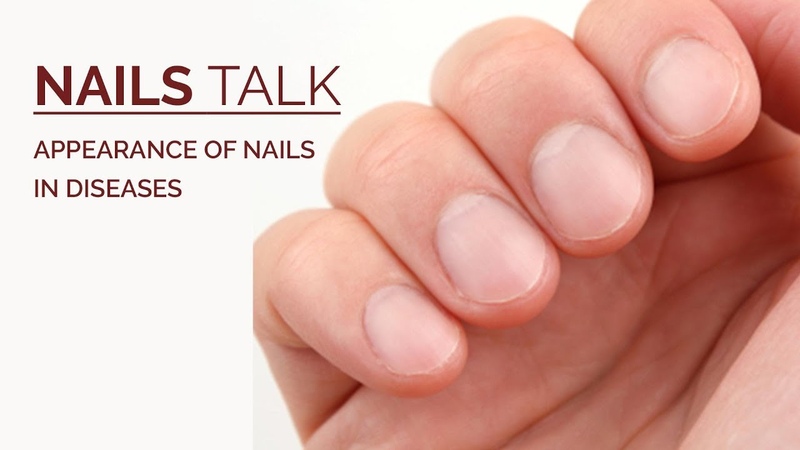
What are the most effective treatments for chronic paronychia? Management of chronic paronychia often requires a multifaceted approach:
- Avoidance of irritants and moisture
- Topical corticosteroids to reduce inflammation
- Antifungal agents (topical or oral) if fungal infection is present
- Lifestyle modifications to prevent recurrence
In both acute and chronic cases, identifying and addressing underlying causes is crucial for long-term management and prevention of recurrence.
Onycholysis: Causes, Diagnosis, and Treatment Approaches
Onycholysis refers to the separation of the nail plate from the underlying nail bed. What are the common causes of onycholysis? Etiologies can be diverse, including:
- Trauma
- Psoriasis
- Fungal infections
- Contact irritants or allergens
- Systemic diseases (e.g., thyroid disorders)
- Certain medications
How is onycholysis diagnosed? Diagnosis typically involves a thorough clinical examination and patient history. In some cases, additional tests may be necessary to rule out underlying conditions or infections.

Treatment and Management of Onycholysis
What are the key principles in managing onycholysis? Treatment strategies often include:
- Identifying and addressing the underlying cause
- Keeping the affected area dry and clean
- Trimming the detached portion of the nail
- Applying topical antifungal or antibacterial agents if indicated
- Protecting the nail from further trauma
How long does it take for onycholysis to resolve? Recovery time can vary significantly depending on the cause and extent of the separation. Complete regrowth of a healthy nail can take several months to a year. Patient education and compliance with treatment recommendations are crucial for optimal outcomes.
Nail Cosmetics and Their Impact on Nail Health
The use of nail cosmetics has become increasingly popular, but what impact do these products have on nail health? While many nail cosmetics are safe when used properly, improper application or removal, as well as prolonged use, can lead to various nail disorders.
What are some common nail disorders associated with cosmetic use?
- Contact dermatitis
- Brittle nails
- Onycholysis
- Paronychia
- Subungual hemorrhage
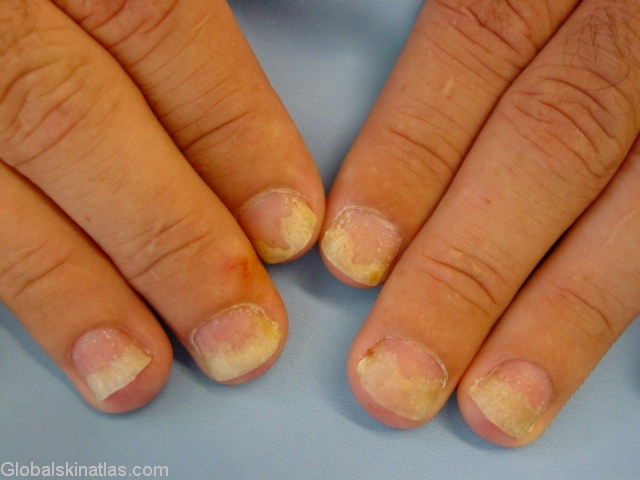
Safe Use of Nail Cosmetics and Preventive Measures
How can individuals minimize the risk of nail damage from cosmetics? Key preventive measures include:
- Limiting the frequency and duration of nail polish use
- Using acetone-free nail polish removers
- Avoiding aggressive buffing or filing of the nail surface
- Properly moisturizing nails and cuticles
- Taking regular breaks from nail enhancements (e.g., acrylics, gels)
What role do “nail-friendly” cosmetics play in maintaining nail health? The development of breathable nail polishes and less harsh removal techniques has aimed to reduce the negative impacts of cosmetics on nail health. However, even with these advancements, moderation and proper application remain crucial for maintaining healthy nails.
Emerging Trends and Future Directions in Nail Disorder Management
What are the latest advancements in nail disorder diagnosis and treatment? Recent years have seen significant progress in various areas:
- Advanced imaging techniques for nail disorders
- Development of targeted biologic therapies for nail psoriasis
- Novel antifungal agents with improved efficacy and safety profiles
- Increased understanding of the nail microbiome and its role in health and disease
- Personalized medicine approaches based on genetic and molecular markers
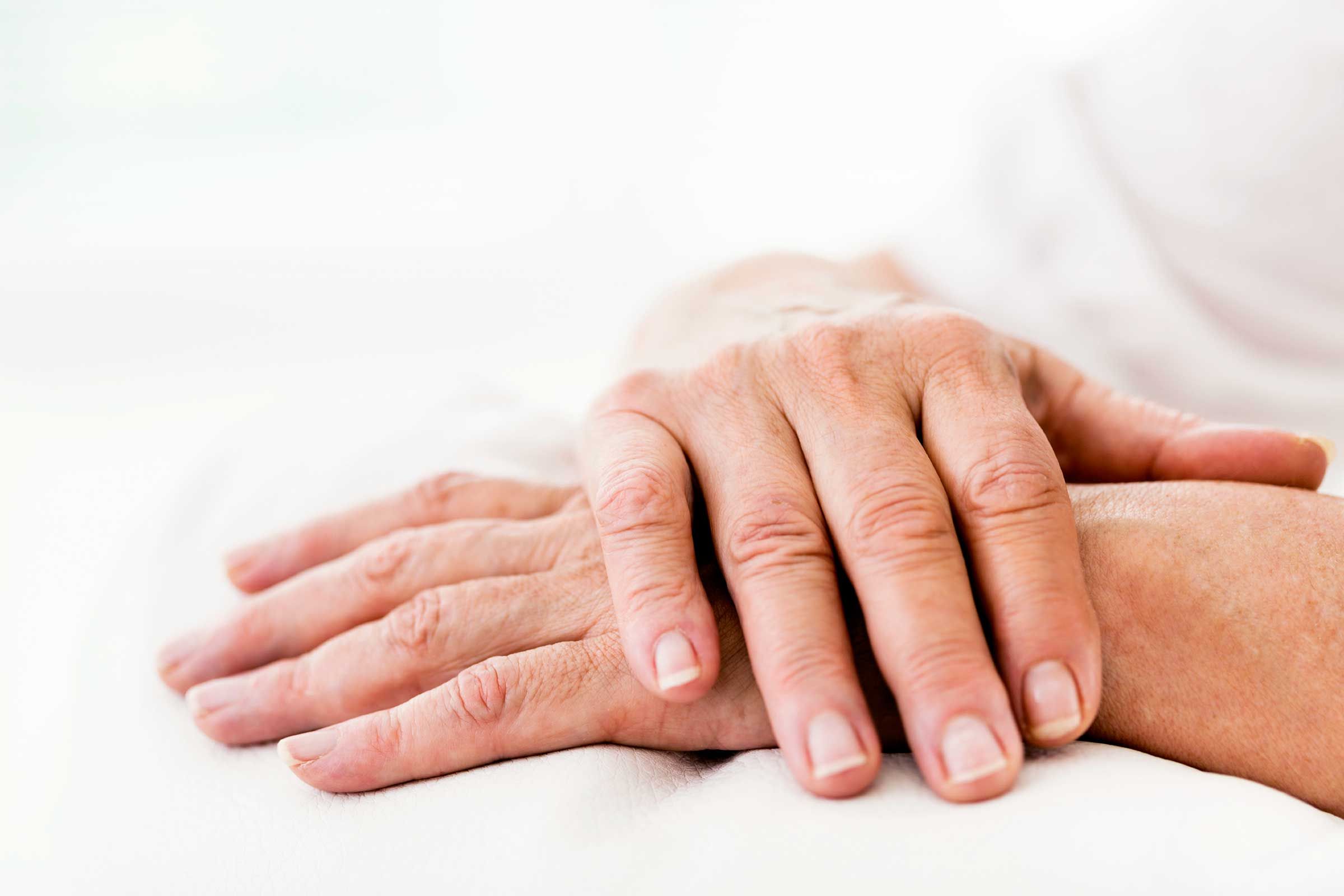
How are these advancements shaping the future of nail disorder management? The trend is moving towards more precise, personalized treatment strategies that consider individual patient factors, disease characteristics, and genetic predispositions. This approach promises to improve treatment outcomes and patient satisfaction.
Challenges and Opportunities in Nail Health Research
What are the current challenges in nail disorder research and treatment? Some key areas include:
- Improving early detection and diagnosis of nail disorders
- Developing more effective treatments for recalcitrant conditions
- Addressing the psychosocial impact of nail disorders
- Enhancing patient education and adherence to treatment regimens
- Investigating the long-term safety and efficacy of newer therapies
How can these challenges be addressed? Collaborative efforts between dermatologists, researchers, and industry partners are crucial for advancing the field. Increased funding for nail health research, improved clinical trial design, and greater emphasis on patient-reported outcomes will all contribute to better understanding and management of nail disorders in the future.

Optimal diagnosis and management of common nail disorders
1. van de Kerkhof PC, Pasch MC, Scher RK, et al..
Brittle nail syndrome: a pathogenesis-based approach with a proposed grading system. J Am Acad Dermatol. 2005;53(4):644–651. [PubMed] [Google Scholar]
2. Iorizzo M, Pazzaglia M, Piraccini BM, et al..
Brittle nails. J Cosmet Dermatol. 2004;3(3):138–144. [PubMed] [Google Scholar]
3. Chessa MA, Iorizzo M, Richert B, et al..
Pathogenesis, clinical signs and treatment recommendations in brittle nails: a review [published correction appears in Dermatol Ther (Heidelb). 2020 Jan 22]. Dermatol Ther (Heidelb). 2020;10(1):15–27. [PMC free article] [PubMed] [Google Scholar]
4. Shemer A, Daniel CR III..
Common nail disorders. Clin Dermatol. 2013;31(5):578–586. [PubMed] [Google Scholar]
5. Baran R, Schoon D..
Nail fragility syndrome and its treatment. J Cosmet Dermatol. 2004;3(3):131–137. [PubMed] [Google Scholar]
6. Dahdah MJ, Scher RK..
Nail diseases related to nail cosmetics. Dermatol Clin. 2006;24(2):233–239. [PubMed] [Google Scholar]
Dermatol Clin. 2006;24(2):233–239. [PubMed] [Google Scholar]
7. Haneke E.
Onychocosmeceuticals. J Cosmet Dermatol. 2006;5(1):95–100. [PubMed] [Google Scholar]
8. Iorizzo M.
Tips to treat the 5 most common nail disorders: brittle nails, onycholysis, paronychia, psoriasis, onychomycosis. Dermatol Clin. 2015;33(2):175–183. [PubMed] [Google Scholar]
9. John JJ, Cooley V, Lipner SR..
Assessment of biotin supplementation among patients in an outpatient dermatology clinic. J Am Acad Dermatol. 2019;81(2):620–621. [PubMed] [Google Scholar]
10. Lipner SR.
Update on biotin therapy in dermatology: time for a change. J Drugs Dermatol. 2020;19(12):1264–1265. [PubMed] [Google Scholar]
11. Maddy AJ, Tosti A..
What’s new in nail disorders. Dermatol Clin. 2019;37(2):143–147. [PubMed] [Google Scholar]
12. Finlay AY, Frost P, Keith AD, et al..
An assessment of factors influencing flexibility of human fingernails. Br J Dermatol. 1980;103(4):357–365. [PubMed] [Google Scholar]
13.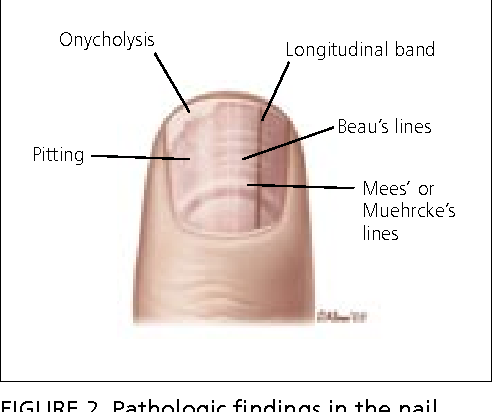 Gupta AK, Versteeg SG, Shear NH..
Gupta AK, Versteeg SG, Shear NH..
Onychomycosis in the 21st century: an update on diagnosis, epidemiology, and treatment. J Cutan Med Surg. 2017;21(6):525–539. [PubMed] [Google Scholar]
14. Lipner SR, Scher RK..
Onychomycosis: clinical overview and diagnosis. J Am Acad Dermatol. 2019;80(4):835–851. [PubMed] [Google Scholar]
15. Cozzani E, Agnoletti AF, Speziari S, et al..
Epidemiological study of onychomycosis in older adults with onychodystrophy. Geriatr Gerontol Int. 2016;16(4):486–491. [PubMed] [Google Scholar]
16. Stewart CR, Algu L, Kamran R, et al..
Effect of onychomycosis and treatment on patient-reported quality-of-life outcomes: a systematic review. J Am Acad Dermatol. 2021;85(5):1227–1239. [PubMed] [Google Scholar]
17. Beuscher TL, Kelechi TJ..
Onychomycosis: diagnosis, treatment, and prevention. J Wound Ostomy Continence Nurs. 2019;46(4):333–335. [PubMed] [Google Scholar]
18. Ramesh V, Reddy BS, Singh R..
Onychomycosis. Int J Dermatol. 1983;22(3):148–152. [PubMed] [Google Scholar]
[PubMed] [Google Scholar]
19. Leung AKC, Lam JM, Leong KF, et al..
Onychomycosis: an updated review. Recent Pat Inflamm Allergy Drug Discov. 2020;14(1):32–45. [PMC free article] [PubMed] [Google Scholar]
20. Lipner SR, Scher RK..
Evaluation of nail lines: color and shape hold clues. Cleve Clin J Med. 2016;83(5):385–391. [PubMed] [Google Scholar]
21. Piraccini BM, Alessandrini A..
Onychomycosis: a review. J Fungi (Basel). 2015;1(1):30–43. [PMC free article] [PubMed] [Google Scholar]
22. Pichardo-Geisinger R, Mora DC, Newman JC, et al..
Comorbidity of tinea pedis and onychomycosis and evaluation of risk factors in Latino immigrant poultry processing and other manual laborers. South Med J. 2014;107(6):374–379. [PubMed] [Google Scholar]
23. Mahoney JM, Bennet J, Olsen B..
The diagnosis of onychomycosis. Dermatol Clin. 2003;21(3):463–467. [PubMed] [Google Scholar]
24. Hay RJ, Baran R..
Onychomycosis: a proposed revision of the clinical classification. J Am Acad Dermatol. 2011;65(6):1219–1227. [PubMed] [Google Scholar]
J Am Acad Dermatol. 2011;65(6):1219–1227. [PubMed] [Google Scholar]
25. Piraccini BM, Tosti A..
White superficial onychomycosis: epidemiological, clinical, and pathological study of 79 patients. Arch Dermatol. 2004;140(6):696–701. [PubMed] [Google Scholar]
26. Hay RJ, Baran R, Moore MK, et al..
Candida onychomycosis-an evaluation of the role of Candida species in nail disease. Br J Dermatol. 1988;118(1):47–58. [PubMed] [Google Scholar]
27. Lipner SR, Scher RK..
Confirmatory testing for onychomycosis. JAMA Dermatol. 2016;152(7):847. [PubMed] [Google Scholar]
28. Lipner SR, Scher RK..
Onychomycosis – a small step for quality of care. Curr Med Res Opin. 2016;32(5):865–867. [PubMed] [Google Scholar]
29. Allevato MA.
Diseases mimicking onychomycosis. Clin Dermatol. 2010;28(2):164–177. [PubMed] [Google Scholar]
30. Queller JN, Bhatia N..
The dermatologist’s approach to onychomycosis. J Fungi (Basel). 2015;1(2):173–184. [PMC free article] [PubMed] [Google Scholar]
31. Yorulmaz A, Yalcin B..
Yorulmaz A, Yalcin B..
Dermoscopy as a first step in the diagnosis of onychomycosis. Postepy Dermatol Alergol. 2018;35(3):251–258. [PMC free article] [PubMed] [Google Scholar]
32. Piraccini BM, Bruni F, Starace M..
Dermoscopy of non-skin cancer nail disorders. Dermatol Ther. 2012;25(6):594–602. [PubMed] [Google Scholar]
33. Jesús-Silva MA, Fernández-Martínez R, Roldán-Marín R, et al..
Dermoscopic patterns in patients with a clinical diagnosis of onychomycosis-results of a prospective study including data of potassium hydroxide (KOH) and culture examination. Dermatol Pract Concept. 2015;5(2):39–44. [PMC free article] [PubMed] [Google Scholar]
34. Meireles TE, Rocha MF, Brilhante RS, et al..
Successive mycological nail tests for onychomycosis: a strategy to improve diagnosis efficiency. Braz J Infect Dis. 2008;12(4):333–337. [PubMed] [Google Scholar]
35. Ghannoum M, Mukherjee P, Isham N, et al..
Examining the importance of laboratory and diagnostic testing when treating and diagnosing onychomycosis. Int J Dermatol. 2018;57(2):131–138. [PubMed] [Google Scholar]
Int J Dermatol. 2018;57(2):131–138. [PubMed] [Google Scholar]
36. Gupta AK, Stec N, Summerbell RC, et al..
Onychomycosis: a review. J Eur Acad Dermatol Venereol. 2020;34(9):1972–1990. [PubMed] [Google Scholar]
37. Westerberg DP, Voyack MJ..
Onychomycosis: current trends in diagnosis and treatment. Am Fam Physician. 2013;88(11):762–770. [PubMed] [Google Scholar]
38. Cathcart S, Cantrell W, Elewski B..
Onychomycosis and diabetes. J Eur Acad Dermatol Venereol. 2009;23(10):1119–1122. [PubMed] [Google Scholar]
39. Loo DS.
Onychomycosis in the elderly: drug treatment options. Drugs Aging. 2007;24(4):293–302. [PubMed] [Google Scholar]
40. Aggarwal R, Targhotra M, Kumar B, et al..
Treatment and management strategies of onychomycosis. J Mycol Med. 2020;30(2):100949. [PubMed] [Google Scholar]
41. Gupta AK.
Ciclopirox: an overview. Int J Dermatol. 2001;40(5):305–310. [PubMed] [Google Scholar]
42. Lipner SR, Scher RK..
Onychomycosis: Treatment and prevention of recurrence. J Am Acad Dermatol. 2019;80(4):853–867. [PubMed] [Google Scholar]
J Am Acad Dermatol. 2019;80(4):853–867. [PubMed] [Google Scholar]
43. Eichenfield LF, Friedlander SF..
Pediatric onychomycosis: the emerging role of topical therapy. J Drugs Dermatol. 2017;16(2):105–109. [PubMed] [Google Scholar]
44. Solís-Arias MP, García-Romero MT..
Onychomycosis in children. A review. Int J Dermatol. 2017;56(2):123–130. [PubMed] [Google Scholar]
45. Jennings MB, Pollak R, Harkless LB, et al..
Treatment of toenail onychomycosis with oral terbinafine plus aggressive debridement: IRON-CLAD, a large, randomized, open-label, multicenter trial. J Am Podiatr Med Assoc. 2006;96(6):465–473. [PubMed] [Google Scholar]
46. Malay DS, Yi S, Borowsky P, et al..
Efficacy of debridement alone versus debridement combined with topical antifungal nail lacquer for the treatment of pedal onychomycosis: a randomized, controlled trial. J Foot Ankle Surg. 2009;48(3):294–308. [PubMed] [Google Scholar]
47. Dulski A, Edwards CW..
Paronychia. In: StatPearls. Treasure Island (FL): StatPearls Publishing; August 10, 2020. [Google Scholar]
[Google Scholar]
48. Gupta MK, Lipner SR..
Review of chemotherapy-associated paronychia [published online ahead of print, 2021 July 9]. Int J Dermatol. 2021. [PubMed] [Google Scholar]
49. Leggit JC.
Acute and chronic paronychia. Am Fam Physician. 2017;96(1):44–51. [PubMed] [Google Scholar]
50. Lomax A, Thornton J, Singh D..
Toenail paronychia. Foot Ankle Surg. 2016;22(4):219–223. [PubMed] [Google Scholar]
51. Shafritz AB, Coppage JM..
Acute and chronic paronychia of the hand. J Am Acad Orthop Surg. 2014;22(3):165–174. [PubMed] [Google Scholar]
52. Tully AS, Trayes KP, Studdiford JS..
Evaluation of nail abnormalities. Am Fam Physician. 2012;85(8):779–787. [PubMed] [Google Scholar]
53. Rerucha CM, Ewing JT, Oppenlander KE, et al..
Acute hand infections. Am Fam Physician. 2019;99(4):228–236. [PubMed] [Google Scholar]
54. Rockwell PG.
Acute and chronic paronychia. Am Fam Physician. 2001;63(6):1113–1116. [PubMed] [Google Scholar]
55. Rigopoulos D, Larios G, Gregoriou S, et al.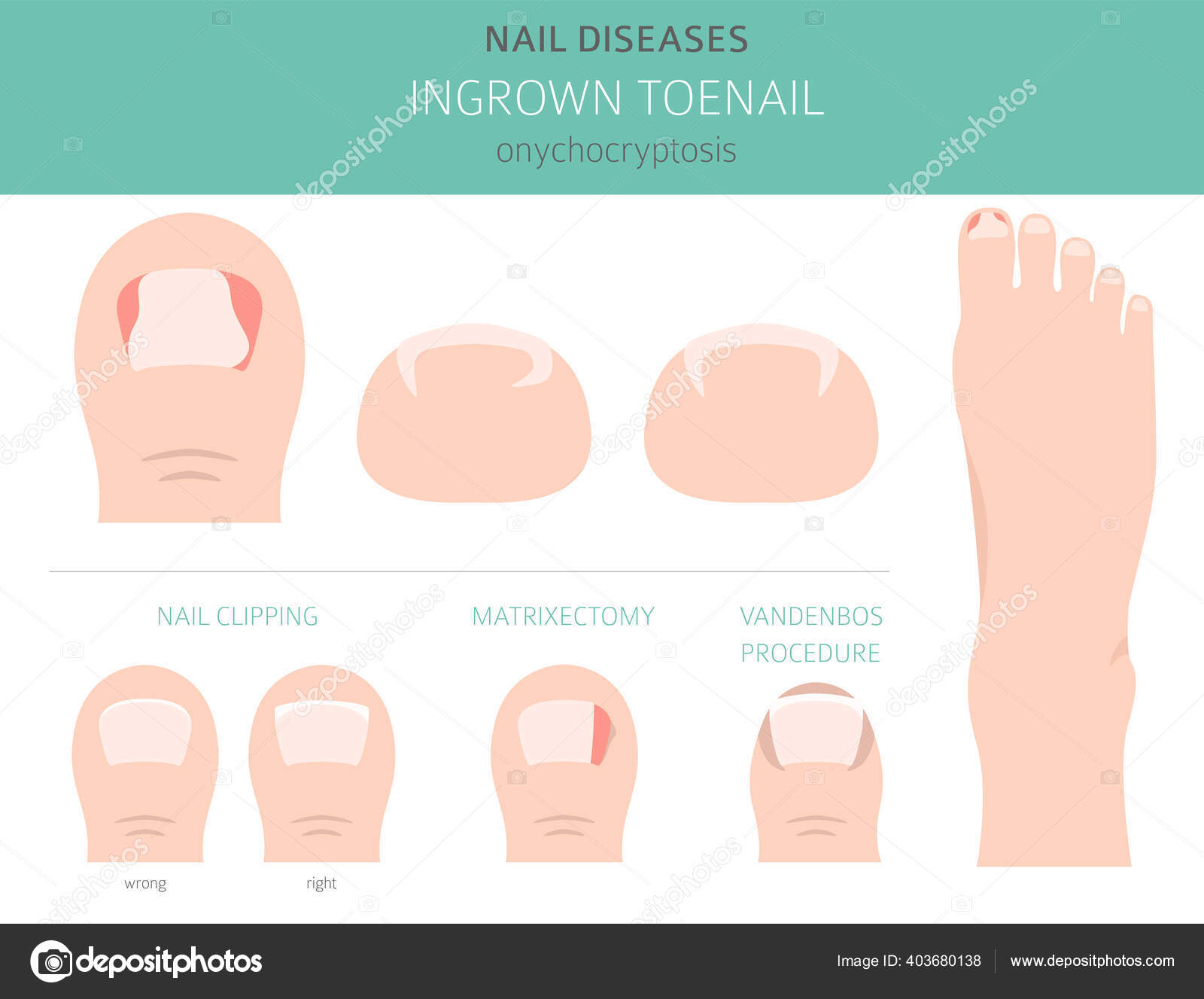 .
.
Acute and chronic paronychia. Am Fam Physician. 2008;77(3):339–346. [PubMed] [Google Scholar]
56. Tosti A, Piraccini BM, D’Antuono A, et al..
Paronychia associated with antiretroviral therapy. Br J Dermatol. 1999;140(6):1165–1168. [PubMed] [Google Scholar]
57. Relhan V, Goel K, Bansal S, et al..
Management of chronic paronychia. Indian J Dermatol. 2014;59(1):15–20. [PMC free article] [PubMed] [Google Scholar]
58. Jebson PJ.
Infections of the fingertip. Paronychias and felons. Hand Clin. 1998;14(4):547–555. [PubMed] [Google Scholar]
59. Hochman LG.
Paronychia: more than just an abscess. Int J Dermatol. 1995;34(6):385–386. [PubMed] [Google Scholar]
60. Gorva AD, Mohil R, Srinivasan MS..
Aggressive digital papillary adenocarcinoma presenting as a paronychia of the finger. J Hand Surg Br. 2005;30(5):534. [PubMed] [Google Scholar]
61. Sollena P, Mannino M, Tassone F, et al..
Efficacy of topical beta-blockers in the management of EGFR-inhibitor induced paronychia and pyogenic granuloma-like lesions: case series and review of the literature. Drugs Context. 2019;8:212613. [PMC free article] [PubMed] [Google Scholar]
Drugs Context. 2019;8:212613. [PMC free article] [PubMed] [Google Scholar]
62. Lacouture ME, Anadkat MJ, Bensadoun RJ, et al..
Clinical practice guidelines for the prevention and treatment of EGFR inhibitor-associated dermatologic toxicities. Support Care Cancer. 2011;19(8):1079–1095. [PMC free article] [PubMed] [Google Scholar]
63. Turkmen A, Warner RM, Page RE..
Digital pressure test for paronychia. Br J Plast Surg. 2004;57(1):93–94. [PubMed] [Google Scholar]
64. Macneal P, Milroy C..
Paronychia drainage. In: StatPearls [Internet]. Treasure Island (FL): StatPearls Publishing; 2021. [Google Scholar]
65. Anakwenze OA, Milby AH, Gans I, et al..
Foot and ankle infections: diagnosis and management. J Am Acad Orthop Surg. 2012;20(11):684–693. [PubMed] [Google Scholar]
66. Wollina U.
Acute paronychia: comparative treatment with topical antibiotic alone or in combination with corticosteroid. J Eur Acad Dermatol Venereol. 2001;15(1):82–84. [PubMed] [Google Scholar]
67. Pierrart J, Delgrande D, Mamane W, et al..
Pierrart J, Delgrande D, Mamane W, et al..
Acute felon and paronychia: antibiotics not necessary after surgical treatment. Prospective study of 46 patients. Hand Surg Rehabil. 2016;35(1):40–43. [PubMed] [Google Scholar]
68. Barger J, Garg R, Wang F, et al..
Fingertip infections. Hand Clin. 2020;36(3):313–321. [PubMed] [Google Scholar]
69. Tosti A, Piraccini BM, Ghetti E, et al..
Topical steroids versus systemic antifungals in the treatment of chronic paronychia: an open, randomized double-blind and double dummy study. J Am Acad Dermatol. 2002;47(1):73–76. [PubMed] [Google Scholar]
70. Kozuki T.
Skin problems and EGFR-tyrosine kinase inhibitor. Jpn J Clin Oncol. 2016;46(4):291–298. [PMC free article] [PubMed] [Google Scholar]
71. Beech J, Germetaki T, Judge M, et al..
Management and grading of EGFR inhibitor-induced cutaneous toxicity. Future Oncol. 2018;14(24):2531–2541. [PubMed] [Google Scholar]
72. Lacouture ME, Mitchell EP, Piperdi B, et al..
Skin toxicity evaluation protocol with panitumumab (STEPP), a phase II, open-label, randomized trial evaluating the impact of a pre-Emptive skin treatment regimen on skin toxicities and quality of life in patients with metastatic colorectal cancer. J Clin Oncol. 2010;28(8):1351–1357. [PubMed] [Google Scholar]
J Clin Oncol. 2010;28(8):1351–1357. [PubMed] [Google Scholar]
73. Masago K, Irie K, Fujita S, et al..
Relationship between paronychia and drug concentrations of epidermal growth factor receptor tyrosine kinase inhibitors. Oncology. 2018;95(4):251–256. [PubMed] [Google Scholar]
74. Bednar MS, Lane LB..
Eponychial marsupialization and nail removal for surgical treatment of chronic paronychia. J Hand Surg Am. 1991;16(2):314–317. [PubMed] [Google Scholar]
75. Baran R, Bureau H..
Surgical treatment of recalcitrant chronic paronychias of the fingers. J Dermatol Surg Oncol. 1981;7(2):106–107. [PubMed] [Google Scholar]
76. Nirbhavane P, Sharma G, Verma S, et al..
Nail psoriasis treatment: insights into current progress and future trends. Crit Rev Ther Drug Carrier Syst. 2020;37(2):135–159. [PubMed] [Google Scholar]
77. Pasch MC.
Nail psoriasis: a review of treatment options. Drugs. 2016;76(6):675–705. [PMC free article] [PubMed] [Google Scholar]
78. Baran R.
The burden of nail psoriasis: an introduction. Dermatology. 2010;221 Suppl 1:1–5. [PubMed] [Google Scholar]
79. Reich K.
Approach to managing patients with nail psoriasis. J Eur Acad Dermatol Venereol. 2009;23 Suppl 1:15–21. [PubMed] [Google Scholar]
80. Augustin M, Reich K, Blome C, et al..
Nail psoriasis in Germany: epidemiology and burden of disease. Br J Dermatol. 2010;163(3):580–585. [PubMed] [Google Scholar]
81. Stewart CR, Algu L, Kamran R, et al..
The impact of nail psoriasis and treatment on quality of life: a systematic review. Skin Appendage Disord. 2021;7(2):83–89. [PMC free article] [PubMed] [Google Scholar]
82. Haneke E.
Nail psoriasis: clinical features, pathogenesis, differential diagnoses, and management. Psoriasis (Auckl). 2017;7:51–63. [PMC free article] [PubMed] [Google Scholar]
83. Dogra A, Arora AK..
Nail psoriasis: the journey so far. Indian J Dermatol. 2014;59(4):319–333. [PMC free article] [PubMed] [Google Scholar]
84. Jiaravuthisan MM, Sasseville D, Vender RB, et al. .
.
Psoriasis of the nail: anatomy, pathology, clinical presentation, and a review of the literature on therapy. J Am Acad Dermatol. 2007;57(1):1–27. [PubMed] [Google Scholar]
85. Ricardo JW, Lipner SR..
Nail psoriasis in older adults: epidemiology, diagnosis, and topical therapy. Dermatol Clin. 2021;39(2):183–193. [PubMed] [Google Scholar]
86. Lipner SR, Iorizzo M..
Clinical pearl: early diagnosis of nail psoriasis and psoriatic arthritis. Cutis. 2017;99(2):138. [PubMed] [Google Scholar]
87. Raposo I, Torres T..
Nail psoriasis as a predictor of the development of psoriatic arthritis. Actas Dermosifiliogr. 2015;106(6):452–457. [PubMed] [Google Scholar]
88. van der Velden HM, Klaassen KM, van de Kerkhof PC, et al..
Fingernail psoriasis reconsidered: a case-control study. J Am Acad Dermatol. 2013;69(2):245–252. [PubMed] [Google Scholar]
89. Rich P, Scher RK..
Nail psoriasis severity index: a useful tool for evaluation of nail psoriasis. J Am Acad Dermatol. 2003;49(2):206–212. [PubMed] [Google Scholar]
2003;49(2):206–212. [PubMed] [Google Scholar]
90. Klaassen KM, van de Kerkhof PC, Bastiaens MT, et al..
Scoring nail psoriasis. J Am Acad Dermatol. 2014;70(6):1061–1066. [PubMed] [Google Scholar]
91. Bardazzi F, Starace M, Bruni F, et al..
Nail psoriasis: an updated review and expert opinion on available treatments, including biologics. Acta Derm Venereol. 2019;99(6):516–523. [PubMed] [Google Scholar]
92. Rigopoulos D, Baran R, Chiheb S, et al..
Recommendations for the definition, evaluation, and treatment of nail psoriasis in adult patients with no or mild skin psoriasis: a dermatologist and nail expert group consensus. J Am Acad Dermatol. 2019;81(1):228–240. [PubMed] [Google Scholar]
93. Uhlenhake EE, Kurkowski D, Feldman SR..
Conversations on psoriasis-what patients want and what physicians can provide: a qualitative look at patient and physician expectations. J Dermatolog Treat. 2010;21(1):6–12. [PubMed] [Google Scholar]
94. de Berker DA, Lawrence CM. .
.
A simplified protocol of steroid injection for psoriatic nail dystrophy. Br J Dermatol. 1998;138(1):90–95. [PubMed] [Google Scholar]
95. Peachey RD, Pye RJ, Harman RR..
The treatment of psoriatic nail dystrophy with intradermal steroid injections. Br J Dermatol. 1976;95(1):75–78. [PubMed] [Google Scholar]
96. Gümüşel M, Özdemir M, Mevlitoğlu I, et al..
Evaluation of the efficacy of methotrexate and cyclosporine therapies on psoriatic nails: a one-blind, randomized study. J Eur Acad Dermatol Venereol. 2011;25(9):1080–1084. [PubMed] [Google Scholar]
97. Haneke E.
Important malignant and new nail tumors. J Dtsch Dermatol Ges. 2017;15(4):367–386. [PubMed] [Google Scholar]
98. Singal A, Bisherwal K..
Melanonychia: etiology, diagnosis, and treatment. Indian Dermatol Online J. 2020;11(1):1–11. [PMC free article] [PubMed] [Google Scholar]
99. Braun RP, Baran R, Le Gal FA, et al..
Diagnosis and management of nail pigmentations. J Am Acad Dermatol. 2007;56(5):835–847. [PubMed] [Google Scholar]
[PubMed] [Google Scholar]
100. Finch J, Arenas R, Baran R..
Fungal melanonychia. J Am Acad Dermatol. 2012;66(5):830–841. [PubMed] [Google Scholar]
101. Ohn J, Yu DA, Park H, et al..
Green nail syndrome: analysis of the association with onychomycosis. J Am Acad Dermatol. 2020;83(3):940–942. [PubMed] [Google Scholar]
102. Jefferson J, Rich P..
Melanonychia. Dermatol Res Pract. 2012;2012:952186. [PMC free article] [PubMed] [Google Scholar]
103. Metzner MJ, Billington AR, Payne WG..
Melanonychia. Eplasty. 2015;15:ic48. [PMC free article] [PubMed] [Google Scholar]
104. André J, Lateur N..
Pigmented nail disorders. Dermatol Clin. 2006;24(3):329–339. [PubMed] [Google Scholar]
105. Ronger S, Touzet S, Ligeron C, et al..
Dermoscopic examination of nail pigmentation. Arch Dermatol. 2002;138(10):1327–1333. [PubMed] [Google Scholar]
106. Gradinaru TC, Mihai M, Beiu C, et al..
Melanonychia – clues for a correct diagnosis. Cureus. 2020;12(1):e6621. [PMC free article] [PubMed] [Google Scholar]
107. Leung AKC, Lam JM, Leong KF, et al..
Leung AKC, Lam JM, Leong KF, et al..
Melanonychia striata: clarifying behind the black curtain. A review on clinical evaluation and management of the 21st century. Int J Dermatol. 2019;58(11):1239–1245. [PubMed] [Google Scholar]
108. Piraccini BM, Tosti A..
Drug-induced nail disorders: incidence, management and prognosis. Drug Saf. 1999;21(3):187–201. [PubMed] [Google Scholar]
109. Tosti A, Baran R, Piraccini BM, et al..
Nail matrix nevi: a clinical and histopathologic study of twenty-two patients. J Am Acad Dermatol. 1996;34(5 Pt 1):765–771. [PubMed] [Google Scholar]
110. Metzger S, Ellwanger U, Stroebel W, et al..
Extent and consequences of physician delay in the diagnosis of acral melanoma. Melanoma Res. 1998;8(2):181–186. [PubMed] [Google Scholar]
111. Klausner JM, Inbar M, Gutman M, et al..
Nail-bed melanoma. J Surg Oncol. 1987;34(3):208–210. [PubMed] [Google Scholar]
112. Levit EK, Kagen MH, Scher RK, et al..
The ABC rule for clinical detection of subungual melanoma. J Am Acad Dermatol. 2000;42(2 Pt 1):269–274. [PubMed] [Google Scholar]
J Am Acad Dermatol. 2000;42(2 Pt 1):269–274. [PubMed] [Google Scholar]
113. Ko D, Oromendia C, Scher R, et al..
Retrospective single-center study evaluating clinical and dermoscopic features of longitudinal melanonychia, ABCDEF criteria, and risk of malignancy [published correction appears in
J Am Acad Dermatol. 2020 Jan; 82(1):260]. J Am Acad Dermatol. 2019;80(5):1272–1283. [PubMed] [Google Scholar]
114. Ko D, Lipner SR..
Concurrent beau lines, onychomadesis, and retronychia following scurvy. Cutis. 2020;105(3):146–149. [PubMed] [Google Scholar]
115. Braswell MA, Daniel CR, Brodell RT..
Beau lines, onychomadesis, and retronychia: a unifying hypothesis. J Am Acad Dermatol. 2015;73(5):849–855. [PubMed] [Google Scholar]
116. Piraccini BM, Alessandrini A..
Drug-related nail disease. Clin Dermatol. 2013;31(5):618–626. [PubMed] [Google Scholar]
117. Piraccini BM, Iorizzo M, Starace M, et al..
Drug-induced nail diseases. Dermatol Clin. 2006;24(3):387–391. [PubMed] [Google Scholar]
118. Ben-Dayan D, Mittelman M, Floru S, et al..
Ben-Dayan D, Mittelman M, Floru S, et al..
Transverse nail ridgings (beau’s lines) induced by chemotherapy. Acta Haematol. 1994;91(2):89–90. [PubMed] [Google Scholar]
119. Park J, Li K..
Images in clinical medicine. Multiple beau’s lines. N Engl J Med. 2010;362(20):e63. [PubMed] [Google Scholar]
120. Piraccini BM, Iorizzo M, Antonucci A, et al..
Drug-induced nail abnormalities. Expert Opin Drug Saf. 2004;3(1):57–65. [PubMed] [Google Scholar]
121. Baran R.
Retinoids and the nails. J. Dermatol. Treat. 1990;1(3):151–154. [Google Scholar]
122. Chen HH, Liao YH..
Beau’s lines associated with itraconazole. Acta Derm Venereol. 2002;82(5):398. [PubMed] [Google Scholar]
123. Avery H, Cooper HL, Karim A..
Unilateral beau’s lines associated with a fractured olecranon. Australas J Dermatol. 2010;51(2):145–146. [PubMed] [Google Scholar]
124. Chiu H-H, Liu M-T, Chung W-H, et al..
The mechanism of onychomadesis (nail shedding) and beau’s lines following hand-foot-mouth disease. Viruses. 2019;11(6):522. [PMC free article] [PubMed] [Google Scholar]
Viruses. 2019;11(6):522. [PMC free article] [PubMed] [Google Scholar]
125. Tucker JR.
Nail deformities and injuries. Prim Care. 2015;42(4):677–691. [PubMed] [Google Scholar]
126. Ward DJ, Hudson I, Jeffs JV..
Beau’s lines following hand trauma. J Hand Surg Br. 1988;13(4):411–414. [PubMed] [Google Scholar]
127. Tosti A, Morelli R, D’Alessandro R, et al..
Carpal tunnel syndrome presenting with ischemic skin lesions, acroosteolysis, and nail changes. J Am Acad Dermatol. 1993;29(2 Pt 2):287–290. [PubMed] [Google Scholar]
128. Egger A, Tosti A..
Carpal tunnel syndrome and associated nail changes: review and examples from the author’s practice. J Am Acad Dermatol. 2020;83(6):1724–1729. [PubMed] [Google Scholar]
129. Lee YJ, Yun SK..
Unilateral beau’s lines associated with a fingertip crushing injury. J Dermatol. 2005;32(11):914–916. [PubMed] [Google Scholar]
130. Harford RR, Cobb MW, Banner NT..
Unilateral beau’s lines associated with a fractured and immobilized wrist. Cutis. 1995;56(5):263–264. [PubMed] [Google Scholar]
Cutis. 1995;56(5):263–264. [PubMed] [Google Scholar]
131. Dawber R.
The effect of immobilization on fingernail growth. Clin Exp Dermatol. 1981;6(5):533–535. [PubMed] [Google Scholar]
132. Wortsman X, Wortsman J, Guerrero R, et al..
Anatomical changes in retronychia and onychomadesis detected using ultrasound. Dermatol Surg. 2010;36(10):1615–1620. [PubMed] [Google Scholar]
133. Hardin J, Haber RM..
Onychomadesis: literature review. Br J Dermatol. 2015;172(3):592–596. [PubMed] [Google Scholar]
134. Bernier V, Labrèze C, Bury F, et al..
Nail matrix arrest in the course of hand, foot and mouth disease. Eur J Pediatr. 2001;160(11):649–651. [PubMed] [Google Scholar]
135. Davia JL, Bel PH, Ninet VZ, et al..
Onychomadesis outbreak in Valencia, Spain associated with hand, foot, and mouth disease caused by enteroviruses. Pediatr Dermatol. 2011;28(1):1–5. [PubMed] [Google Scholar]
136. Osterback R, Vuorinen T, Linna M, et al..
Coxsackievirus A6 and hand, foot, and mouth disease, Finland. Emerg Infect Dis. 2009;15(9):1485–1488. [PMC free article] [PubMed] [Google Scholar]
Emerg Infect Dis. 2009;15(9):1485–1488. [PMC free article] [PubMed] [Google Scholar]
137. Wei SH, Huang YP, Liu MC, et al..
An outbreak of coxsackievirus A6 hand, foot, and mouth disease associated with onychomadesis in Taiwan. BMC Infect Dis. 2011;11(1):346. [PMC free article] [PubMed] [Google Scholar]
138. Chu DH, Rubin AI..
Diagnosis and management of nail disorders in children. Pediatr Clin North Am. 2014;61(2):293–308. [PubMed] [Google Scholar]
139. Acharya S, Balachandran C..
Onychomadesis in stevens johnson syndrome. Indian J Dermatol Venereol Leprol. 1996;62(4):264–265. [PubMed] [Google Scholar]
140. Ciastko AR.
Onychomadesis and Kawasaki disease. CMAJ. 2002;166(8):1069. [PMC free article] [PubMed] [Google Scholar]
141. Patel NC, Silverman RA..
Neonatal onychomadesis with candidiasis limited to affected nails. Pediatr Dermatol. 2008;25(6):641–642. [PubMed] [Google Scholar]
142. Mazereeuw-Hautier J, Bonafé JL..
Bilateral beau’s lines and pyogenic granulomas following Guillain-Barré syndrome.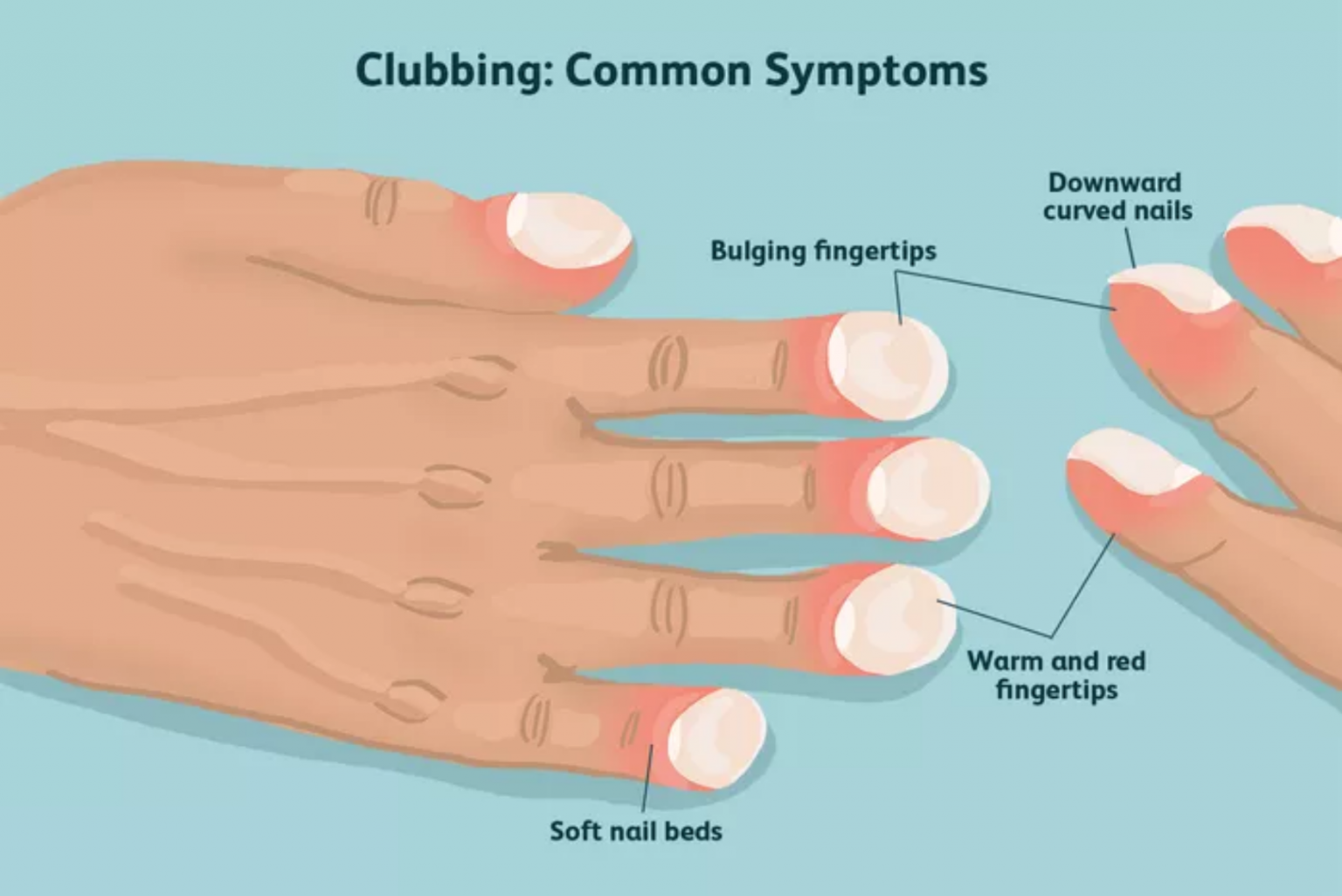 Dermatology. 2004;209(3):237–238. [PubMed] [Google Scholar]
Dermatology. 2004;209(3):237–238. [PubMed] [Google Scholar]
143. LaRow JA, Mysliborski J, Rappaport IP, et al..
Alopecia areata universalis in an infant. J Cutan Med Surg. 2001;5(2):131–134. [PubMed] [Google Scholar]
144. Habibi M, Mortazavi H, Shadianloo S, et al..
Nail changes in pemphigus vulgaris. Int J Dermatol. 2008;47(11):1141–1144. [PubMed] [Google Scholar]
145. Suchonwanit P, Nitayavardhana S..
Idiopathic sporadic onychomadesis of toenails. Case Rep Dermatol Med. 2016;2016:6451327. [PMC free article] [PubMed] [Google Scholar]
146. Martin S, Rudolph AH..
Familial dystrophic periodic shedding of the nails. Cutis. 1980;25(6):622–623. [PubMed] [Google Scholar]
147. de Berker DA, Richert B, Duhard E, et al..
Retronychia: proximal ingrowing of the nail plate. J Am Acad Dermatol. 2008;58(6):978–983. [PubMed] [Google Scholar]
148. de Mello CDBF, Souza MDRE, Noriega LF, et al..
Retronychia. An Bras Dermatol. 2018;93(5):707–711. [PMC free article] [PubMed] [Google Scholar]
149. Pessoa E Costa T, João AL, Lencastre A..
Pessoa E Costa T, João AL, Lencastre A..
Retronychia: a paradigm shift?
Skin Appendage Disord. 2020;6(5):268–271. [PMC free article] [PubMed] [Google Scholar]
150. Ventura F, Correia O, Duarte AF, et al..
Retronychia-clinical and pathophysiological aspects. J Eur Acad Dermatol Venereol. 2016;30(1):16–19. [PubMed] [Google Scholar]
151. Au AS, Leung WY, Tran D..
Retronychia: a literature review. J Am Podiatr Med Assoc. 2020;110(3)Article_9. [PubMed] [Google Scholar]
152. Salgado F, Handler MZ, Schwartz RA..
Shedding light on onychomadesis. Cutis. 2017;99(1):33–36. [PubMed] [Google Scholar]
153. Nanda S, Grover C..
Utility of gel nails in improving the appearance of cosmetically disfigured nails: experience with 25 cases. J Cutan Aesthet Surg. 2014;7(1):26–31. [PMC free article] [PubMed] [Google Scholar]
154. Fleming CJ, Hunt MJ, Barnetson RS..
Mycosis fungoides with onychomadesis. Br J Dermatol. 1996;135(6):1012–1013. [PubMed] [Google Scholar]
155. Mishra D, Singh G, Pandey SS..
Mishra D, Singh G, Pandey SS..
Possible carbamazepine-induced reversible onychomadesis. Int J Dermatol. 1989;28(7):460–461. [PubMed] [Google Scholar]
156. Kim HS, Lee SH, Yoon TJ, et al..
Early stage onychomadesis presenting as painful swellings of proximal nail folds. Cutis. 2001;67(4):317–318. [PubMed] [Google Scholar]
157. Piraccini BM, Richert B, de Berker DA, et al..
Retronychia in children, adolescents, and young adults: a case series. J Am Acad Dermatol. 2014;70(2):388–390. [PubMed] [Google Scholar]
158. Vastarella M, Annunziata MC, Panariello L, et al..
A novel treatment for retronychia: case series. J Dermatolog Treat. 2020;31(3):254–255. [PubMed] [Google Scholar]
Nail diseases & disorders – Omaha
Did you know the condition of your nails can say a lot about your overall health? More than just a nuisance or cosmetic issue, nail diseases and abnormalities can help doctors detect underlying conditions. Many nail abnormalities are associated with systemic diseases such as hyperthyroidism and anemia. That said, it’s important to seek evaluation early if you notice a change in the health and appearance of your fingernails or toenails.
That said, it’s important to seek evaluation early if you notice a change in the health and appearance of your fingernails or toenails.
In addition to treating skin, dermatologists specialize in the treatment of hair and nails. The following are nail conditions commonly treated by your MOD Dermatology providers:
Nail fungus or onychomycosis:
Onychomycosis is a fungal nail infection characterized by patches or white or yellow discoloration, thickening of the nail, separation of the nail from the nail bed, and brittle, crumbly, or ragged nails. Old age, a history of athlete’s foot, walking barefoot in damp communal areas (such as showers and swimming pools), excessive sweating, and having diabetes can all increase your risk of developing onychomycosis or a fungal nail infection.
Psoriasis of the nail:
Psoriasis, an autoimmune disease characterized by abnormal skin plaques, can also impact nails. Common signs of nail psoriasis include nail pits, buildup beneath the nail, nails separating from the nail bed, and nail discoloration. Over time, psoriasis of the nails can worsen and cause permanent nail damage or affect your ability to use your hands and feet.
Over time, psoriasis of the nails can worsen and cause permanent nail damage or affect your ability to use your hands and feet.
Lichen planus of the nail:
Lichen planus is an inflammatory skin condition that can also affect the nails. Nail lichen planus is characterized by the thinning, ridging, and splitting of the nail. Without treatment, lichen planus can result in permanent nail loss.
Onycholysis:
Onycholysis is the separation of the nail from the nail bed. Onycholysis can be a sign of skin disease or infection, but can also be caused by excessive nail filing, chemical exposure, allergic contact dermatitis, and other injuries. Without proper treatment and care during the healing process, onycholysis can result in infections and the permanent loss of the nail.
Paronychia:
Paronychia is a bacterial or fungal infection of the tissue around the nail. This nail disease causes inflammation, redness, throbbing, and tenderness of finger or toe tissue around the nail. There are two types of paronychia—acute and chronic—each with different causes and treatment methods.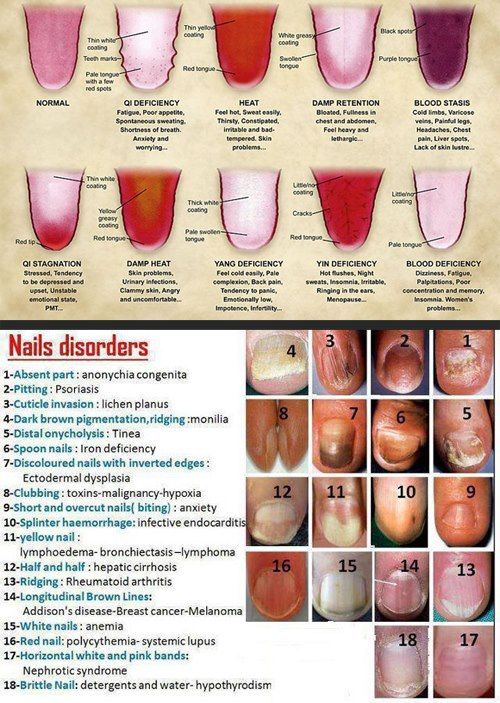
Onychorrhexis, onychoschizia, or brittle nail syndrome:
Onychorrhexis, or brittle nails, is a condition that causes vertical ridges to form on finger or toenails. Onychorrhexis has a wide variety of causes, including trauma to the nail, exposure to chemicals (such as nail polish remover or household cleaners), hypothyroidism, anemia, eating disorders, and more. Sometimes no treatment is needed. However, if your nail abnormality is a symptom of something else, treatment may involve addressing the underlying medical condition.
Pseudomonas nail infection:
Sometimes referred to as green nail syndrome, pseudomonas nail infections are caused by the bacteria Pseudomonas aeruginosa. This bacterium is found in wet environments such as hot tubs and sinks. It’s characterized by its green color which causes the green discoloration of infected nails.
Manicurist and infectious diseases – symptoms, treatment and prevention
August 17, 2019
org/ImageObject”>Choosing a manicurist is an important and responsible task. In addition to professionalism, the specialist must ensure sterile conditions when processing the client’s nails. It is the duty of every craftsman to properly sterilize the instruments, which will kill all kinds of bacteria.
There are many infections that can be transmitted during a nail salon or home procedure. To prevent this from happening, the master must carefully process each tool (tweezers, file, scissors, etc.). A responsible approach protects the client from the appearance of various diseases caused by infectious agents.
Symptoms of infectious diseases
If a nail salon master does not adhere to sanitary norms and rules, this can end badly for himself and for the client. A manicure specialist should be aware of the signs of infectious diseases and methods of their treatment. Names and symptoms of fungal diseases of the skin and nails:
- Onychomycosis.
 With this fungal disease, the thickness increases and the color of the nail plate changes. After some time, it crumbles and deforms, sometimes delamination and ingrown nails are observed.
With this fungal disease, the thickness increases and the color of the nail plate changes. After some time, it crumbles and deforms, sometimes delamination and ingrown nails are observed. - Felon. An unpleasant disease that manifests itself in the form of an inflammatory process of the tissues around the nail with the formation of an abscess at the site of inflammation. Occurs when the skin or nail is injured as a result of infection in the wound.
- Ringworm. A contagious skin disease caused by the parasitic fungi Trichophyton tonsurans and Microsporum canis. White spots appear on the skin, less often – stripes of white or yellow.
- Candidiasis of the nail folds. Symptoms of Candida infection are painful, reddened, and swollen skin around the nails. At the 3rd stage, the nail plate thickens, becomes cloudy and changes color to gray-brown or brown-brown.
- Onycholysis. At the first stage of the disease, the nail becomes white, then the plate is separated from the finger.
 If infection occurred with pathogenic fungi, then later onycholysis develops onychomycosis.
If infection occurred with pathogenic fungi, then later onycholysis develops onychomycosis.
Causes of diseases
All diseases of the nails on the hands and feet can be divided into 2 main groups: non-fungal and fungal. To make a correct diagnosis, you need to study the appearance of the affected nail plate. Causes of non-fungal nail diseases:
- improper care;
- unhealthy diet;
- trauma;
- dermatitis;
- infectious diseases;
- psoriasis;
- eczema;
- smoking;
- heredity;
- diseases of the heart, thyroid, or nervous system.
Fungal infections are more serious diseases caused by an infectious agent. If symptoms of damage to the nail plate appear, immediate treatment is required.
Methods of elimination and prevention
Manicurists use the following methods to combat microorganisms: that cause infectious diseases
Instruments, napkins, towels and all substances that a specialist uses when performing manicure and pedicure are subject to sterilization. For complete cleaning, high temperature, chemicals with pronounced disinfectant properties and ionizing radiation are used. Before sterilization, instruments should be washed in running water and soap.
For complete cleaning, high temperature, chemicals with pronounced disinfectant properties and ionizing radiation are used. Before sterilization, instruments should be washed in running water and soap.
Rooms, workplaces, equipment, appliances, used instruments before sterilization, the hands of the manicurist and the client are subject to disinfection. An effective special solution is periodically processed and interior items, including chairs, tables, baths for manicure and pedicure.
Each manicure master must comply with sanitary and hygienic standards for the prevention of various infectious diseases of the skin and nails:
- 100% destruction of infectious agents in the air of the room, at the workplace, used tools and objects.
- Ensuring the cleanliness of the skin of the master and the client. The master’s workplace will look perfect if you use a powerful MAX vacuum cleaner for manicure and pedicure. The hood draws in dust from nails and coatings, which floats in the air and gets into the eyes and lungs, onto the table and equipment.

Comprehensive implementation of the above sanitary and hygienic measures will allow you to successfully fight infections that cause nail and skin diseases, protect the manicurist and his clients from dangerous ailments.
we detect, treat and eliminate the consequences
Healthy nails are beautiful! However, aesthetic appearance is not the main reason to take care of your nails. Sometimes exfoliating, cracked, yellowed nail plates are a sign of more serious illnesses. Let’s figure out what “nail” diseases are, how to deal with them and how to restore beauty and healthy appearance to deformed nails.
What are healthy nails like?
There are three criteria for healthy nails:
- Natural soft pink
-
Surface: without bulges and depressions, even -
Structure: uniform, no seals
If the condition of the nails began to deteriorate, this is a reason to start treatment. After all, the usual yellowness or the state of the “layer cake” can cause the development of something more dangerous.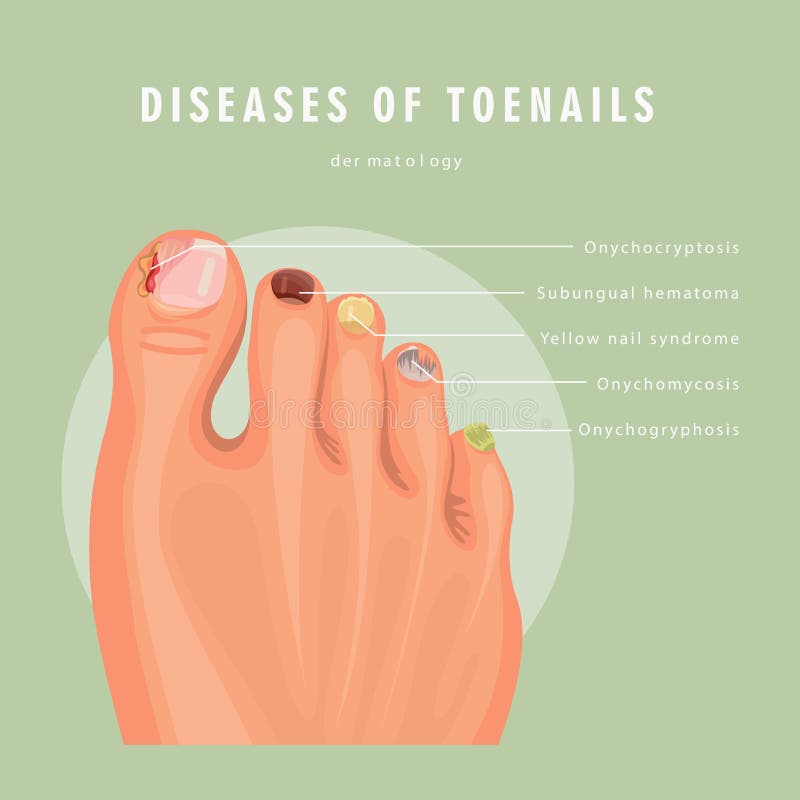
Why nails hurt: external and internal causes of diseases
Nail diseases have several causes. We conditionally divide them into external and internal.
|
|
|---|---|
|
|
|
|
|
|
|
|
|
|
|
|
Many reasons depend on us: hand care, our lifestyle, habits, and it is in our power to correct mistakes that lead to problems with nails.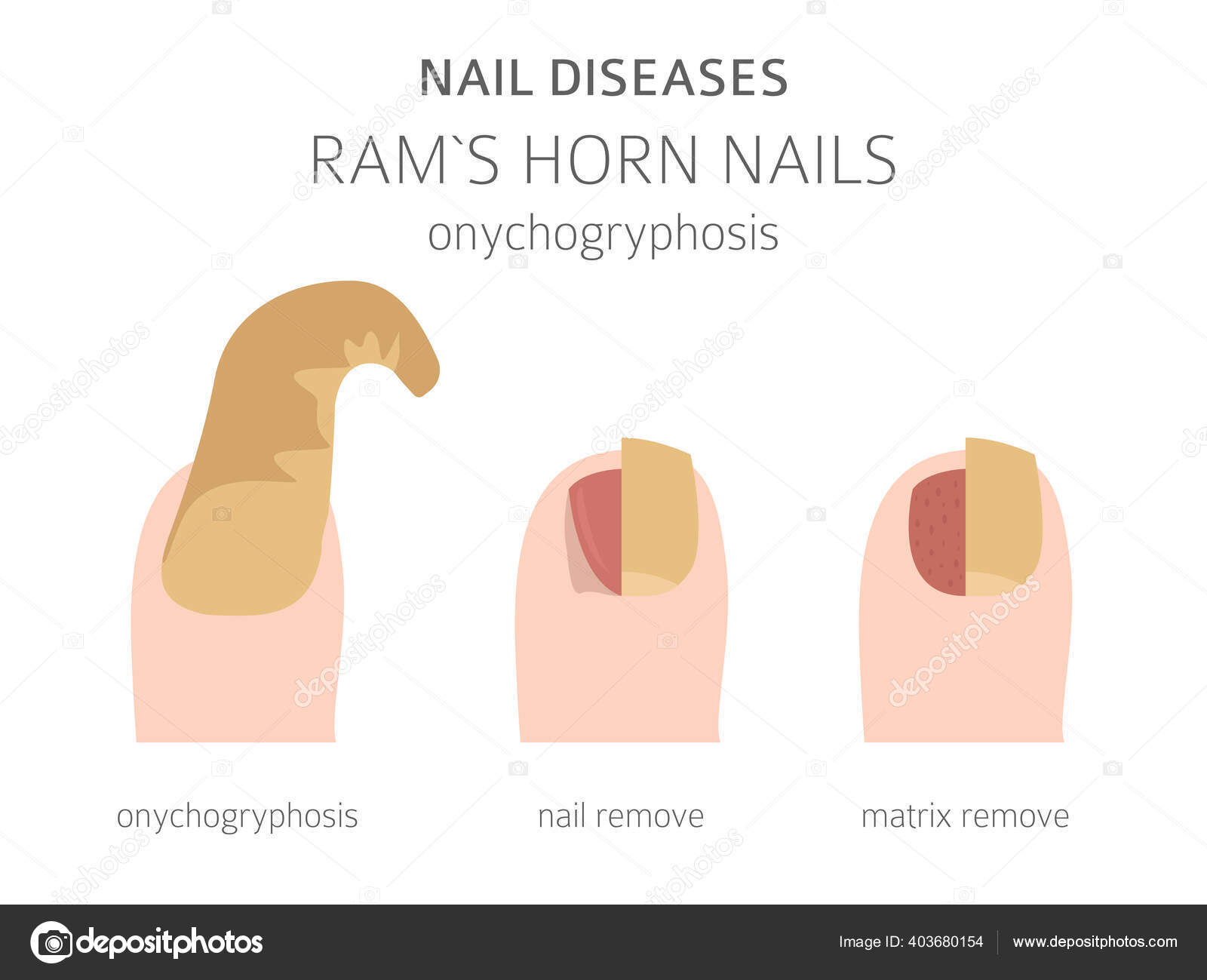
When nail disease is a sign of internal disease
Unhealthy nails may change color, shape, or texture. Here are a few diseases that are “alarm bells” indicating the presence of various, sometimes serious ailments.
Detachment – psoriasis, fungus, allergies, somatic diseases, injuries
First, the nail plate turns white, and then exfoliates from the bed. A void forms between them, due to which the plate changes its color.
Delamination of the nail plate – lack of calcium, heart disease and endocrine disorders
Among the reasons for “layering” may be the use of “aggressive” files, and improperly processed nails during manicure.
White spots – unbalanced diet, heart failure, stress, injury
White dots on the nails are leukonychia. In fact, these are small air bubbles between the layers of the nail plate. They can be pointwise, or they can affect the entire nail plate.
Discoloration – anemia, gastrointestinal problems, hormonal imbalances
If the nails turn from natural pinkish to bluish, white or yellow, then something is broken in the body.
Nails turned blue – low hemoglobin, impaired circulation or oxygen starvation.
White nails – problems with the liver, digestion or blood vessels;
Nails turned yellow – liver disease, impaired lymph flow or hormonal failures. Other factors can also cause yellowness: smoking, advanced age, medication, exposure to toxic household chemicals, or the use of low-grade nail products.
Microscopic pits on the nails – arthritis, psoriasis or eczema
It looks like this: the nail plate is covered with dotted depressions, as if from a needle prick.
Brittle nails – vitamin deficiency, diabetes or thyroid disease
If the free edge of the nail practically does not grow back, but immediately breaks, the body needs vitamin A, E and C, iron and zinc.
Vertical grooves on the nails – lack of vitamins and minerals, heart or digestive problems, manicure injuries
For the elderly, this is the norm, but for people under 50, it is not. In addition to diseases, grooves can remain after a manicure or pedicure. For example, if the nail master damaged the base of the nail or left cuts from the hardware cutter.
In addition to diseases, grooves can remain after a manicure or pedicure. For example, if the nail master damaged the base of the nail or left cuts from the hardware cutter.
Horizontal grooves – injury, powerful drugs or infection
Such lines appear when the nail plate lacks nutrition. In this case, the depleted tissue changes its composition, and deformations appear on the surface of the nail. This can happen if you exhaust yourself with diets or eat poorly, not varied.
Spoon nails – genetics, endocrine disorders, iron deficiency or injury
The deflection of the center of the nail plate is called koilonychia. It does not cause pain or discomfort, but it looks extremely unaesthetic.
Hippocratic fingers (drumsticks) – diseases of the lungs, heart, blood vessels, gastrointestinal tract.
The nail plates become thicker and resemble convex lenses. This is a sign of a serious illness.
Dark streaks on nails – cancer, indigestion or injury
As a rule, a dark streak is a consequence of an injury or impaired digestion.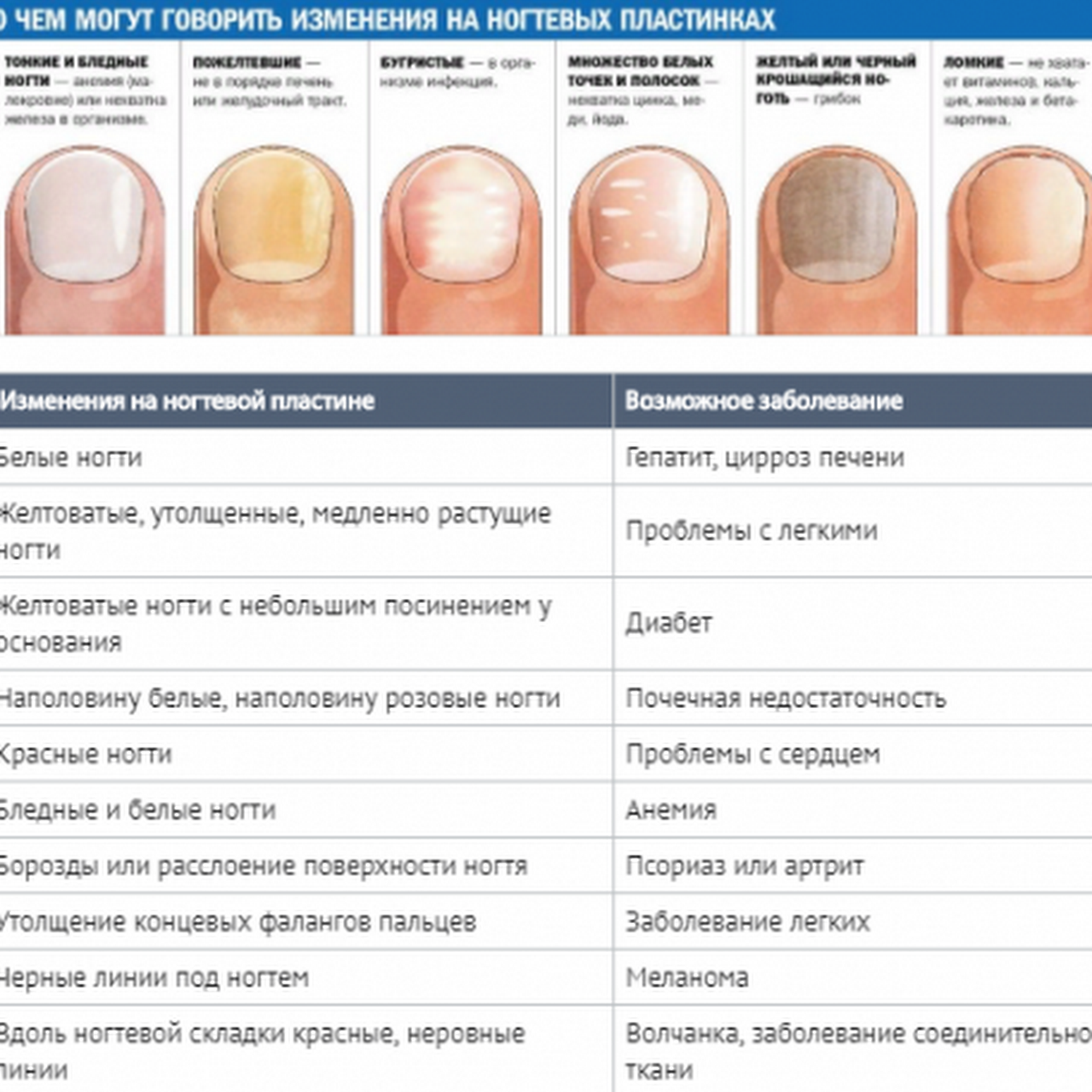 However, if there were no strokes, you eat properly and varied, and the strip still appeared, urgently make an appointment with the doctor. It is likely that this is a symptom of melanoma – skin cancer.
However, if there were no strokes, you eat properly and varied, and the strip still appeared, urgently make an appointment with the doctor. It is likely that this is a symptom of melanoma – skin cancer.
If you have any abnormality, the first thing to do is to consult a specialist – a dermatologist or a general practitioner. Do not be too lazy to undergo an examination, because if defects in the nail plate are caused by diseases of the internal organs, the root cause should be treated, and not deal with the symptoms.
Cosmetic defects: how to fix them?
Diseases from the above list are somehow associated with disturbances in the functioning of internal organs and systems, and these defects are cosmetic in nature. You can fix them yourself or sign up for a manicure session.
Ingrown toenail – manicure, massage or (in extreme cases!) surgery
The main reason for an ingrown nail is an improperly done manicure, for example, when the corners of the nails were cut off heavily, and when they grew back, they stuck into the skin of the side ridges. Because of this, inflammation develops. If the problem cannot be corrected with manicure tools and massage, you will have to resort to surgery.
Because of this, inflammation develops. If the problem cannot be corrected with manicure tools and massage, you will have to resort to surgery.
Smoker’s nails – whitening traces of nicotine
From tobacco smoke, nails can not only turn yellow, but turn brown. If you do not intend to get rid of addiction, just whiten your nails. At home, this can be done with compresses or baths with hydrogen peroxide, lemon juice or aspirin. Or seek help from a specialist, and the master will “disguise” the consequences of smoking.
Cracked nail – moisturizing + neat manicure
If a crack occurs at the base of the nail, an infection can get into it, which will cause inflammation. Causes of cracked nails:
- Too dry cuticle
- Excessively deep cuticle cutting
- Inaccurate manicure.
Bruise on the nail plate – regrowth of the free edge of the nail
Dark purple or black spots appear on the nails due to injuries – wounds and bleeding in the nail bed. It remains only to wait until the dark dot grows. In the meantime, the bruise is still in place, try not to put pressure on the injured nail to avoid its detachment.
It remains only to wait until the dark dot grows. In the meantime, the bruise is still in place, try not to put pressure on the injured nail to avoid its detachment.
Bitten nails – regular hygienic manicure
The bad habit of biting your nails does not have the best effect on the condition of the nail plate. The nail master will mask the bitten edges of the nails with regular (!) Performing hygienic manicure. And you can wean yourself from biting your nails in the old “old-fashioned” way – smear your fingertips with hot pepper or bitter wormwood juice.
Proliferating pterygium – careful but gentle removal
Pterygium are pieces of the cuticle that attach to the nail and begin to grow forward. It must be carefully cleaned during a manicure, and the cuticle area should be lubricated with almond oil.
How to repair a damaged nail plate?
While you’re fighting the root cause or treating nail disease, don’t forget about aesthetics. You can restore damaged nails with the help of some manicure techniques.
You can restore damaged nails with the help of some manicure techniques.
Strengthening with acrylic powder – strength and durability
A layer of acrylic powder will create an additional “shield”, thanks to which the nail will not bend and break, and the color coating will be worn for a long time.
Leveling with gel polish or bio gel – repairing defects
If the surface of the nail plate is uneven, there are pits or bulges on it, they can be “filled” with biogel or a thick rubber base.
Bio-reinforcement – strengthening and repairing cracked nails
Bio-reinforcement is the restoration of natural nails with the help of fibroin (silkworm protein) and bio-coating. With this procedure, you can:
✓ Reinforce artificial turf
✓ Repair a cracked or chipped nail
✓ Align the nail plate
Paraffin therapy – from dryness and microcracks
The master applies a nourishing composition to the hands and nails, and then “seals” it with hot liquid paraffin. Thus, a “greenhouse effect” is created, and beneficial substances penetrate deeper into the tissues.
Thus, a “greenhouse effect” is created, and beneficial substances penetrate deeper into the tissues.
Seal nails – reduce brittleness and look healthy
Sealing is a salon procedure. The nail master rubs a substance based on honey and beeswax into the nail plate. The thinnest film is formed on the surface of the nail, which reduces brittleness, protects against damage and gives the nails a healthy look.
Healing Coatings for Health and Radiance
Special medical coatings for nails are sold in pharmacies and cosmetic stores. And the procedure can be performed both in the salon and at home.
Hand masks – nutrition and restoration of skin and nails
Masks with plant extracts restore water balance, nourish nails, enrich them with vitamins and microelements.
Cosmetic oils – nutrition and strengthening of the nail plate
If your nails are thin, super soft, or too brittle, lubricate them regularly with cosmetic oil. So the nail plate will receive additional nutrition and begin to heal itself.
10 simple rules for healthy nails
1. Lead a healthy lifestyle. It is useful not only for nails, but also for the whole organism.
2. If the condition of the nails worries you, consult a doctor. Perhaps damaged nails are just the tip of the iceberg.
3. Eat healthy and varied. From food, our body receives all the necessary vitamins, minerals and trace elements.
4. Take care of your hands and nails: do massage, paraffin therapy, nourishing masks and baths.
5. Looking for gel polish or hand cosmetics? Be picky! Nail health is not something you can save on.
6. Don’t bite your nails!
7. Get your nails done regularly. It will help eliminate defects and give the nails a well-groomed appearance.
8. Do you file your nails with a file or buff? Do this in one direction to prevent delamination of the nail plate.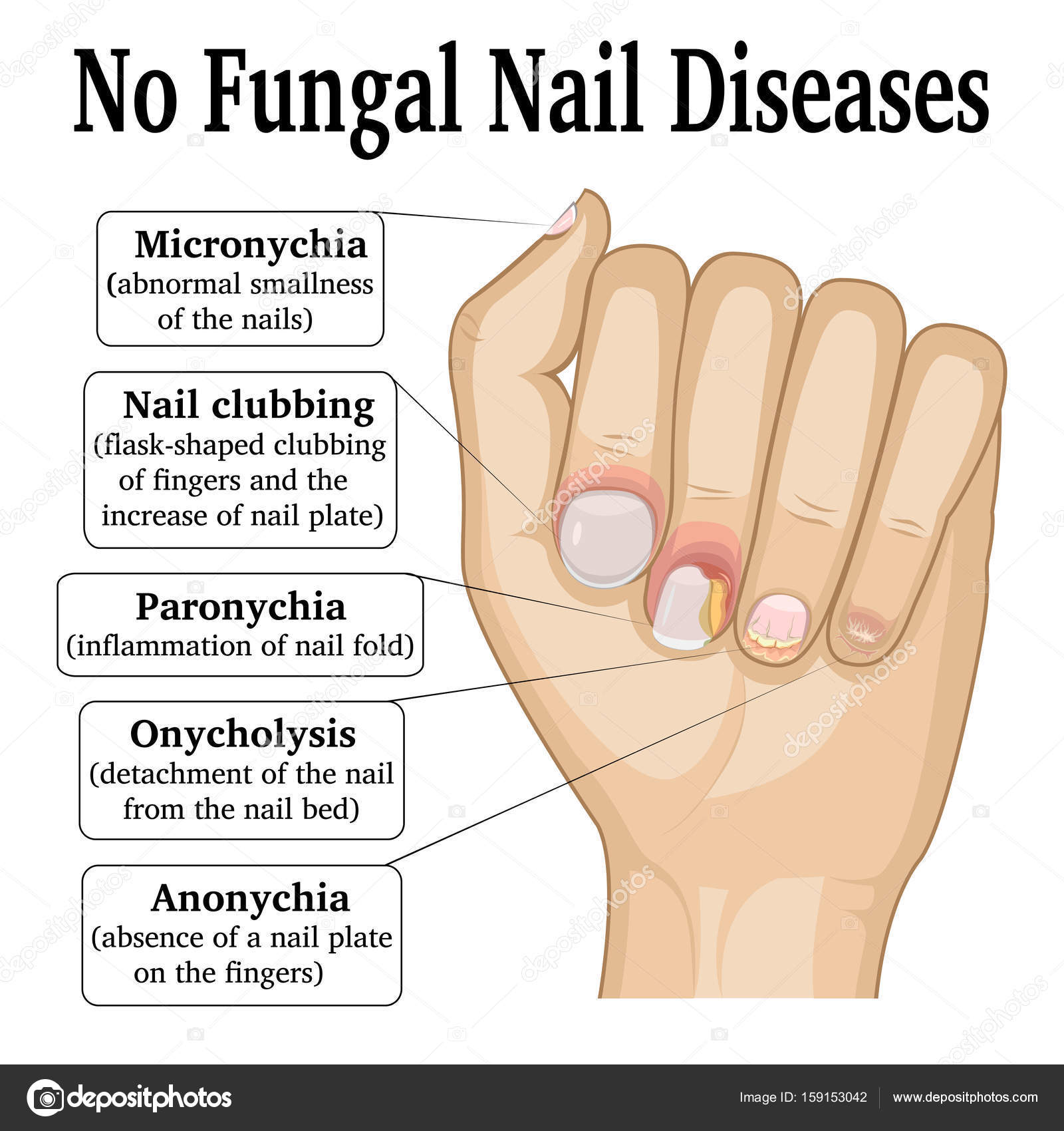

 With this fungal disease, the thickness increases and the color of the nail plate changes. After some time, it crumbles and deforms, sometimes delamination and ingrown nails are observed.
With this fungal disease, the thickness increases and the color of the nail plate changes. After some time, it crumbles and deforms, sometimes delamination and ingrown nails are observed. If infection occurred with pathogenic fungi, then later onycholysis develops onychomycosis.
If infection occurred with pathogenic fungi, then later onycholysis develops onychomycosis.